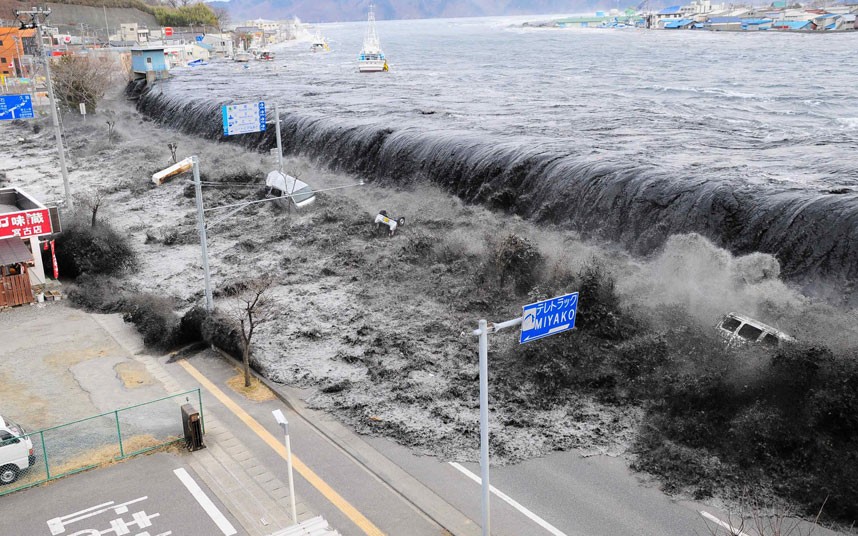Massive tsunami that hit Britain 8,200 years ago would wipe out present-day cities in Scotland – study
06/11/2021 / By Virgilio Marin

A new study published in the journal Boreas suggests that the massive tsunami that hit the U.K. around 8,200 years ago will wipe out modern-day cities and towns in Scotland if it happens again today.
Called the Storegga tsunami, the event was triggered by a submarine landslide in the Norwegian Sea, north of the U.K. It is widely considered the largest natural disaster to hit the country in the last 10,000 years or so. Waves up to 100 feet high traveled 373 miles from Scotland’s coastline, flooding seafront areas.
For their study, British researchers created computer models of the tsunami to estimate how far it traveled inland. They found that waves reached as far as 18.6 miles from the coastline.
If a tsunami of that magnitude were to happen today, it would wipe out seafront areas of the towns of Aberdeen, Inverness, Arbroath, Montrose, Stonehaven and Wick. All of these towns have built-up areas that sit just 33 feet above sea level and directly face the shore, leaving them vulnerable to big tsunamis.
“Although the Storegga tsunami has been known about for years, this is the first time we have been able to model how far inland from Scotland’s coastline the tsunami wave traveled,” said Mark Bateman, a professor of geography at the University of Sheffield and the study’s lead researcher.
Bateman said that the Norwegian Sea is not going to unleash another big tsunami any time soon. But he noted the U.K. could still be at risk of flooding due to volcanic eruptions in other parts of the world, such as in the Canary Islands. (Related: Hawaiian volcanic activity could become the catalyst that unleashes an extinction level event in the Cascadian Subduction Zone.)
“These would cause a similar resulting tsunami wave due to the amount of material that would be displaced by the volcano,” Bateman said.
He added that their models give experts a unique window into the past to show how tsunamis could affect the U.K. today. David Tappin, a geologist from the British Geological Survey, who was not part of the study, also commented that the study provides important insights into the Storegga tsunami.
“The research highlights the importance of applying new scientific techniques to older-studied events, thereby improving our knowledge of their impact,” Tappin said.
What are submarine landslides?
Submarine landslides occur due to unstable conditions in the seafloor. Instability is caused by a variety of things, including the flow of sediment from rivers, the over-steepening of the seafloor, sea-level change, earthquakes, underwater construction and the disappearance of gas hydrates that used to stabilize the seafloor.
During a submarine landslide, sediments move down a slope and replace water as they move. If the moving sediment masses are large enough, they displace so much water that they generate a tsunami.
The submarine landslide that triggered the Storegga tsunami is part of a series of events called the Storegga slides. Together, they left a scar on the seafloor that begins 60 miles off Norways’ More Coast and extends 1,000 miles into the abyssal plain of the Norwegian Sea. Geologists regard the scar, which was discovered in 1983, as the largest slope failure in the world.
Submarine landslides are quite common in the region south of the United States. A study published last year found 85 previously unidentified submarine landslides that occurred in the Gulf of Mexico between 2008 and 2015. It’s not clear if the slides caused any damage but they serve as a reminder of the disasters that can hit the region.
“The observed landslides suggest a possible tsunami hazard for coastal communities along the Gulf of Mexico and that seabed infrastructure in the Gulf of Mexico, including oil platforms and pipelines, is also at risk from the landslides,” said lead research Wenyuan Fan, an assistant professor of geophysics at Florida State University.
Follow Disaster.news for more about tsunamis, landslides and other natural disasters.
Sources include:
Tagged Under: chaos, Collapse, Flooding, geology, natural disasters, research, Scotland, Storegga slides, Storegga tsunami, submarine landslides, tsunamis, U.K.
RECENT NEWS & ARTICLES
COPYRIGHT © 2017 SCIENTIFIC NEWS





















